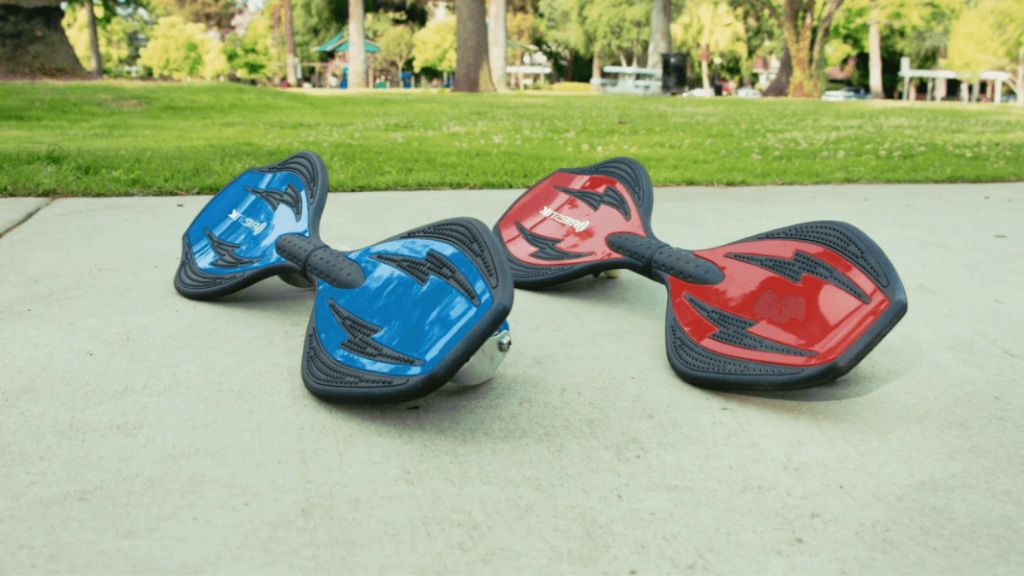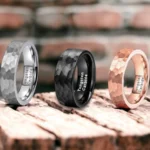RipStiking has become a popular recreational activity for individuals of all ages, offering a unique blend of skateboarding and surfing experiences. Whether you’re a seasoned RipStik rider or a novice eager to start, the choice of the riding surface significantly impacts your overall experience.
In this in-depth guide, we will delve into the various surfaces suitable for RipStik riding, exploring the nuances that make each one distinct and providing insights to help riders make informed decision.
The Essence of RipStiking
Before delving into the best surfaces, let’s briefly explore what makes RipStiking a distinctive sport. Developed by the innovative minds at Razor USA, the RipStik is a two-wheeled caster board that combines skateboarding, snowboarding, and surfing elements.
Its unique design features two separate platforms connected by a torsion bar, allowing riders to propel themselves forward with twisting hips. This dynamic movement creates a fluid and exhilarating riding experience, making RipStiking both challenging and addictive.
The Importance of Surface Selection
Choosing the right surface for RipStik riding is crucial for several reasons. The terrain type significantly influences your ability to perform tricks, control the board, and, most importantly, ensure a safe and enjoyable experience.
Different surfaces offer distinct challenges and advantages, so understanding the characteristics of each is essential for riders seeking to optimize their skills and enhance their overall enjoyment.
Smooth Pavement
Smooth pavement is the quintessential surface for RipStik riding. Whether it’s a quiet suburban street, a well-maintained parking lot, or a smooth concrete skatepark, the evenness of the pavement allows for a seamless and enjoyable ride.
Smooth surfaces provide an excellent balance between control and freedom, allowing riders to master tricks and maneuvers with ease.
Advantages
- Controlled Maneuverability: The smoothness of the pavement facilitates precise control over the RipStik, making it easier to execute tricks and turns.
- Speed: The lack of obstacles and bumps allows for faster rides, enhancing the overall thrill of RipStiking.
- Trick Performance: Smooth surfaces are ideal for practicing and mastering various tricks, from basic pivots to more advanced flips and spins.
Considerations
- Surface Quality: Ensure the pavement is in good condition to avoid hazards such as cracks, bumps, or debris that could impede your ride or lead to accidents.
- Traffic: Be aware of potential vehicular or pedestrian traffic, especially when riding in public spaces. Choose quiet areas or designated skateparks when possible.
Skateparks
Skateparks are purpose-built facilities designed for skateboarding, BMX biking, and, of course, RipStiking. These parks often feature ramps, bowls, and various obstacles that excite and challenge the riding experience.
Advantages
- Versatility: Skateparks offer a diverse range of features, allowing riders to enhance their skills on ramps, pipes, and other structures.
- Community: Skateparks often gather spots for riders, fostering community and providing opportunities to learn from others.
- Safety: Designed with rider safety in mind, skateparks typically have smooth surfaces and well-maintained structures, reducing the risk of accidents.
Considerations
- Skill Level: Beginners may find skateparks intimidating due to the advanced features. It’s essential to start with simpler elements and gradually progress to more challenging obstacles.
- Park Rules: Familiarize yourself with the specific rules and regulations of the skatepark you visit to ensure a respectful and safe riding experience for everyone.
Indoor Facilities
Indoor facilities, such as roller rinks and indoor skateparks, provide a controlled environment for RipStik riders. These venues offer smooth surfaces and protection from the elements, allowing enthusiasts to enjoy their favorite activity year-round.
Advantages:
- Weather Resistance: Indoor facilities provide a reliable option for riding regardless of weather conditions, making them ideal for year-round practice.
- Smooth Surfaces: The consistent and well-maintained surfaces indoors contribute to a comfortable and controlled riding experience.
- Community Events: Some indoor facilities host events, competitions, or classes, providing opportunities for riders to connect with others and improve their skills.
Considerations
- Cost: Indoor facilities may require a fee for entry or participation. Consider the cost factor when choosing this option.
- Space Availability: Ensure the facility has sufficient space for RipStiking, as some venues may be designed primarily for other activities.
Bike Trails and Greenways
For riders seeking a scenic and adventurous experience, bike trails and greenways offer a unique twist to RipStiking. These trails, often paved or compacted with a fine gravel surface, wind through parks, nature reserves, and urban landscapes, provide a refreshing alternative to traditional riding environments.
Advantages
- Scenic Routes: Bike trails often traverse beautiful landscapes, providing riders with a more immersive and enjoyable experience.
- Fitness Benefits: The longer distances and varying terrains on bike trails contribute to a full-body workout, enhancing the fitness aspect of RipStiking.
- Low Traffic: Unlike busy streets, bike trails typically have lower pedestrian and vehicular traffic, creating a more relaxed riding atmosphere.
Considerations
- Terrain Changes: Be prepared for changes in terrain, including slopes, curves, and different surface textures. These variations add an element of challenge and excitement but may require adjustments to your riding style.
- Trail Etiquette: Respect other trail users, including cyclists, walkers, and joggers. Yield the right of way when necessary and adhere to any posted rules or guidelines.
DIY Ramps and Obstacles
For the adventurous and creative RipStik rider, constructing DIY ramps and obstacles can elevate the riding experience to new heights. Building your features allows you to customize the terrain to suit your preferences and challenge your skills uniquely.
Advantages
- Personalization: DIY ramps and obstacles can be tailored to your skill level and specific tricks you want to practice, providing a personalized training ground.
- Creativity: Building your features encourages creativity and innovation, fostering a deeper connection with the sport.
- Affordability: Depending on your materials and design choices, creating DIY ramps can be a cost-effective way to enhance your RipStiking experience.
Considerations:
- Safety: Prioritize safety when constructing DIY ramps. Ensure stability, use appropriate materials, and take necessary precautions to prevent accidents or injuries.
- Local Regulations: Check local regulations and zoning laws before constructing ramps on private property. Always obtain permission from landowners if necessary.
Parking Lots and Open Spaces
For riders seeking an urban adventure, parking lots and open spaces offer ample opportunities for RipStiking. While not as controlled as skateparks, these environments provide a sense of freedom and room to explore various maneuvers.
Advantages:
- Accessibility: Parking lots and open spaces are readily available in urban and suburban areas, providing convenient locations for spontaneous rides.
- Freedom: The open layout allows riders to experiment with tricks, turns, and spins without the constraints of predefined structures.
- Informal Community: Riders often gather in open spaces, creating impromptu communities where enthusiasts can share tips, tricks, and experiences.
Considerations
- Surface Quality: Assess the pavement quality in parking lots to avoid potential hazards. Cracks, potholes, and debris can pose risks to riders.
- Public Spaces: Be mindful of other users and any regulations or restrictions in public areas. Respect property boundaries and use these spaces responsibly.
Conclusion
Choosing the best surface for RipStik riding depends on personal preferences, skill level, and the type of experience you seek. Whether you’re drawn to the controlled environment of a skatepark, the scenic beauty of bike trails, or the urban allure of parking lots, each surface offers its advantages and considerations.
As with any sport, safety should be a top priority. Familiarize yourself with the specific characteristics of your chosen riding surface, wear appropriate safety gear, and always adhere to local regulations.







